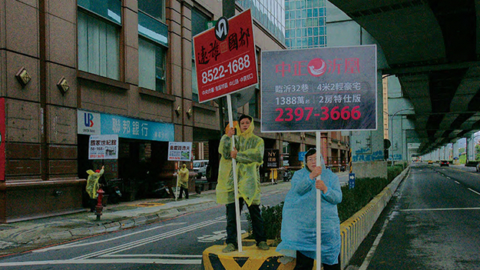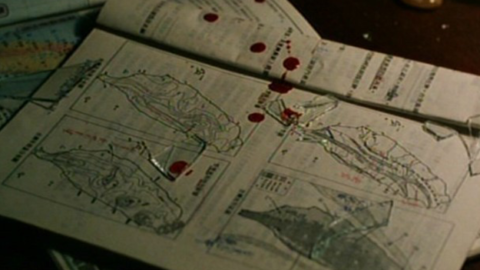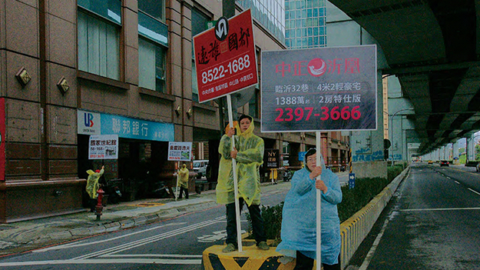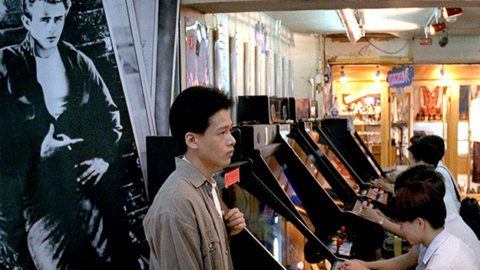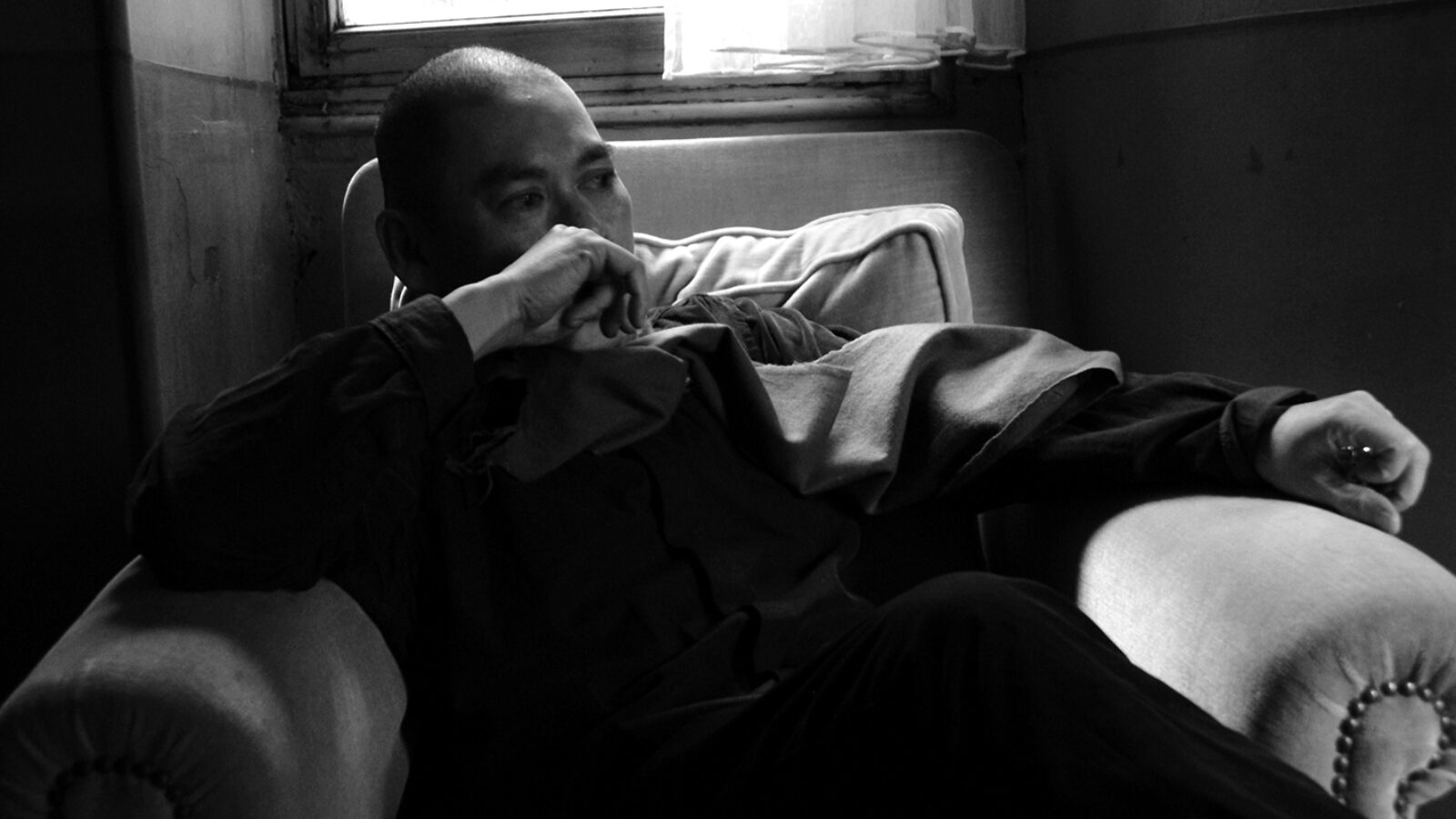
Directions: New Haunts
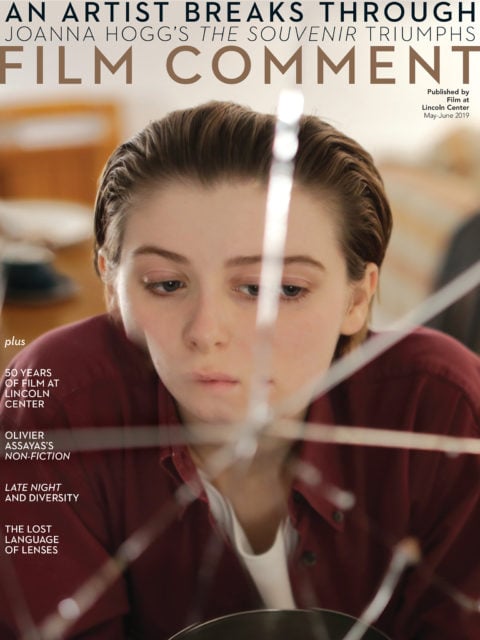
This interview appears in a condensed form in the May-June issue of Film Comment.
In his recent work, Taiwanese maestro Tsai Ming-liang has abandoned any semblance of narrative to pursue new explorations in minimalist image-making. His 2015 feature Afternoon was an extended dialogue, shot in one room, between the director and his perennial muse Lee Kang-sheng, while last year’s 77-minute documentary Your Face was comprised of studies of faces, some silent, some talking, mostly elderly, with laconic musical interventions by Ryuichi Sakamoto. Meanwhile, the ongoing Walker series showed Lee proceeding super slowly through various cities in the guise of a 7th-century monk.
Another of Tsai’s new departures, however, comes across as being very close to his earlier features—albeit in radically new form. The Deserted is his first venture in virtual reality; first seen in 2017 at the Venice Biennale in a 4K version, it has now been upgraded to 8K, and was shown in London in April as part of a Tsai program in the Taiwan Film Festival UK.
Tsai’s 14-shot, 55-minute mini-feature feels very much in the director’s classic vein in that it presents a series of tableaux that seem to sketch out a narrative concerning his usual protagonist, the everyman character sometimes referred to as Xiao Kang, but always played by—and fundamentally inseparable from—the mournful-featured Lee Kang-sheng. The setting is the Lee character’s home in a rural area: a dilapidated apartment open to the elements, and seemingly part of an otherwise abandoned modernist block inhabited by ghosts. In the first shot, Lee slumps shirtless on a sofa, wired up to an electric acupuncture machine that clicks periodically as he flinches from its shocks. An older woman, played by Tsai regular Chen Shiang-chyi, watches across the kitchen; she appears to be his mother, but may be a ghost herself. A number of scenes focus on Lee: in one, through the miracle of VR and a surprisingly placed camera, we find ourselves sitting with him in a huge plastic tub, as he shares a bath with a large pale fish. Other shots involve one of the neighborhood phantoms: a young woman in a white dress (another regular, Lu Yi-ching). She’s first seen standing at a window, gazing out at the world outside, then later seated, enclosed like a prisoner, in a number of crumbling spaces in the building.
The film presents a series of largely event-free tableaux, until eventually something very strange happens, an occurrence that could either be seen as eerie in a ghost story sense, or comic in that beyond-deadpan mode that’s peculiar to Tsai. Lee is lying in his bath—this time, we watch from a distance—when suddenly a woman (Ivy Yin) rises succubus-like out of the water, kissing and embracing him. It’s a very simple surprise that nevertheless must have involved ingenious manipulation of light and shadow, seen through the tub’s translucent sides (and/or discreet postproduction retouching).
We tend to identify the medium of VR with spectacle, interactivity, and elaborate reshaping of the viewer’s perception of space. What’s remarkable about The Deserted, however, is its spatial simplicity and the fact that it doesn’t invite that much active response from the viewer. We just sit in revolving seats watching tableaux staged in front of us; we’re free to turn and examine other surrounding events and scenery, although there’s usually just one specific thing to focus on. Early on, we can turn full circle to examine a garden as the mother ghost passes by; then we see the mother walk along a road, but it’s only if we choose to turn around (and nothing specifically prompts us to) that we also see the white-dress ghost gazing out at the scene.
We don’t get to move from our vantage point, as in some VR experiences. But the medium especially comes into its own when The Deserted plays on our sense of space and texture; in one shot, the ghost crouches on a chair in a crumbling room, a toad hopping at her feet; looking around, we realize that the room is completely sealed, that there’s no logical way that she (or indeed we) could have gotten in, or can get out. In the interiors, we can look around at the rough, fungoid textures of the water-damaged walls; the familiar sculptural and textural elements of Tsai’s work are pushed to new lengths.
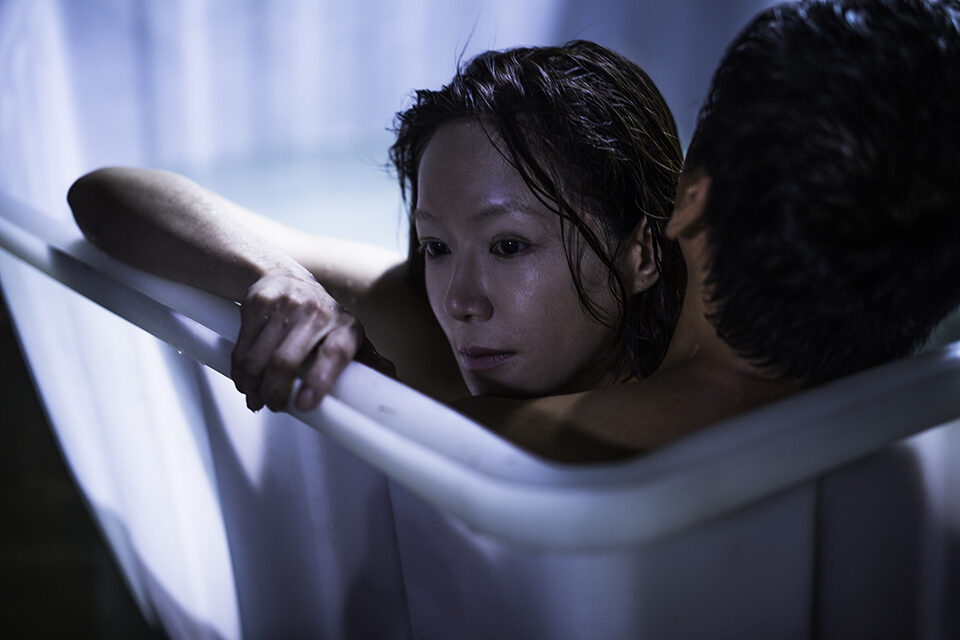
While the epithet “immersive” is usually mandatory for this kind of experience, The Deserted doesn’t strictly fit that label—except perhaps when it puts us in Lee’s bath. Even when the camera position places us in a room with its characters, we still feel as if we’re watching action taking place in front of us as if on a stage. Indeed, the sense of being surrounded by space is illusory: every now and then, you remember that you’re wearing a Vive headset, and at those moments, the feeling is more akin to peering through a ship’s porthole or out of a diving helmet—and because of the still relatively rough pixelation, even in 8K, through mosquito netting too.
However, it’s because Tsai has chosen a simple approach—14 moments that we watch from a fixed vantage point—that the experience feels involving, and continuous. Two things in particular enhance this. One is the way that we often seem to be placed in midair—hovering above the ground or hanging on a wall—making us too feel like ghosts who have materialized in these spaces. Another is the dense orchestration of sound effects: in the opening sequence, the rhythmic clicking of the acupuncture machine, overlaid with the bubbling of a rice cooker and the croak and chirp of the forest fauna outside. Later, we’re almost deafened by the torrential rain that’s a Tsai trademark, seen and heard here pouring into the room from outside, making you shiver as you practically feel the wetness creeping into your bones. The Deserted may seem less like VR in its hyper-sophisticated game-style mode, and more like an art film in 3-D—albeit a 3-D that’s wraparound rather than just frontally placed. But this is in every sense a true Tsai Ming-liang production, haunting, melancholic, and almost palpably damp—unmistakably a creation of contemporary cinema’s poet of the porous.
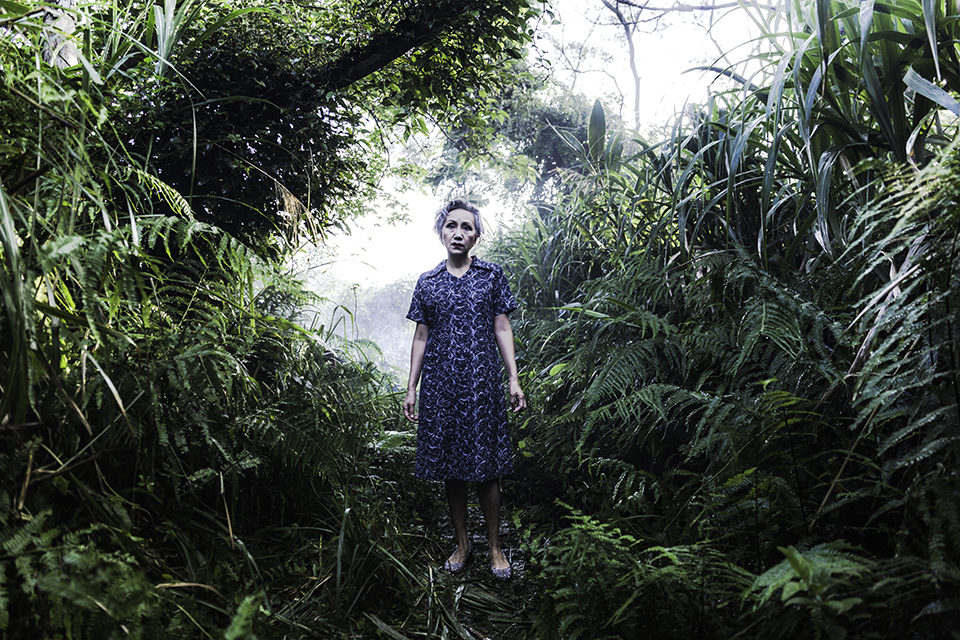
How did the project come about?
Three or four years ago, many people were trying to get me to make a VR film. At first I wasn’t interested—I always thought it was just a medium for gaming. [Taiwanese tech company] HTC invited me to do VR because they wanted some proper content. I tried to watch as much VR work as possible. I thought it was so boring—but then one young person asked me to watch one shot they’d made: actually a still photo in VR. I thought, wow, I could see a lot of colors in this one VR picture, and that made me think again.
Other VR experiences I had always required you to search for something. So in The Deserted, I tried to position the audience in a way where they don’t need to do too much. It depends on how you’re positioned, and that’s where you stay in this VR space. In VR, you’re in your own cinema, you’re in your own film. People aren’t watching the film in a [theater], they’re actually in the film. You’re there and you’re more involved, but you’re on your own—you don’t share the experience with an audience. It’s much more private and intimate.
Watching The Deserted is a strange feeling—looking down at where you think should be, you realize you’re not there, just an invisible presence suspended in space. As the viewer, you become one of the ghosts.
We are all ghosts. I focused on the position, that’s very important. Everybody is a different height, and the camera has its own height. It’s very different from traditional filmmaking where you’re facing this thing and watching from a certain distance—but in VR you also have to think about height. That way, every person has a different composition because your eye level is different. So everyone experiences different films.
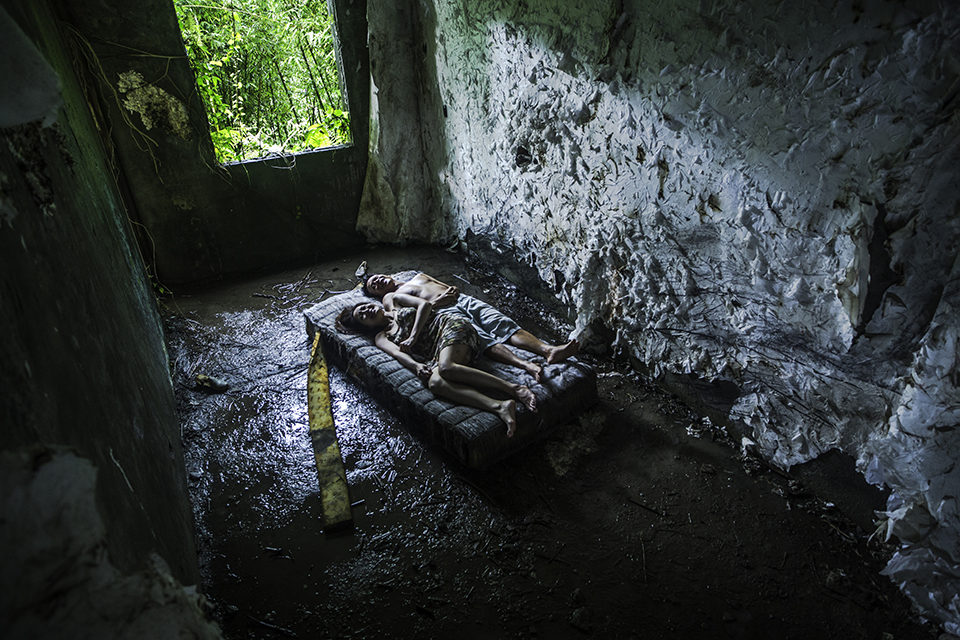
The scenario is based on a ghost episode in a classical Chinese text, Liaozhai Zhiyi. What elements did you use?
It’s not a full adaptation of the novel. The whole concept is based on our life. Before we made The Deserted, Lee Kang-sheng was not well, so we moved to the mountains and these abandoned houses—we live in one section of the buildings, the rest are just ruins. In traditional Chinese philosophy, the ruins might contain a lot of ghosts and spirits—they’re not empty, they’re full of life. So when we moved there, I had this idea that these were our neighbors, and we could create stories together. The whole concept is really close to the idea of the ancient Chinese novel—they’re not really “ghost” ghosts, it’s just that you’re not alone in a place, you have many lives around you, even if you don’t see them. The Chinese title of the film is “The Home at Lan Re Temple,” meaning “a place for a lot of spirits to stay.” It’s a reference to those novels.
People always talk about VR being immersive, but The Deserted is really about immersion, about being inside spaces—even being in a bath with Lee.
There’s a scene with the female ghost in a room—we covered the door so that we’re trapped inside the room. When we were filming the rain scene, I felt that the VR really enhanced the medium—you feel the chill and you feel the rain is really hitting you. That’s the difference.
Your films famously contain a lot of water, often flooding spaces or seeping through walls. What attracts you to working with water? You use it almost like a sculptural material.
Water’s everywhere in our daily life—just leaking, or making damp patches on a wall. It’s just around you, whether you feel it or not. On The Deserted, every time we turned over for another take, the art department needed to spray the walls to make sure they were really wet. It’s something you can’t see without water—when the wall’s wet, it really appears; when it’s dry you can’t see what’s behind it. The wall comes toward you when it’s wet. You can try it in your house! [Laughs]
The fish in The Deserted looks very much like ones we’ve seen in your previous films.
The River was shot in Lee’s home, and he had this little fish. Then it grew and grew to the size it is in What Time Is It There?—it’s the same fish. The fish is part of the film, part of the character. When I made Visage, that fish had died—so we needed another one to play that fish. Now in The Deserted, the fish is the ghost of that fish.
And because Lee was not well, it’s a film about recovering, healing—not from a disease but from your own state of mind. So I wanted to make The Deserted not in an urban setting but somewhere abandoned. It’s about healing from the spirits, from nature, from memories, and maybe also from death.
I’m always watching Lee, and with that inspiration, I make films. Through all these films, he has had the same weird disease. When he had it the first time, in his shoulder and neck, we made The River—20 years later we made The Deserted, so it’s almost the same cycle, the same disease. We don’t know what happened, but it went away on its own.
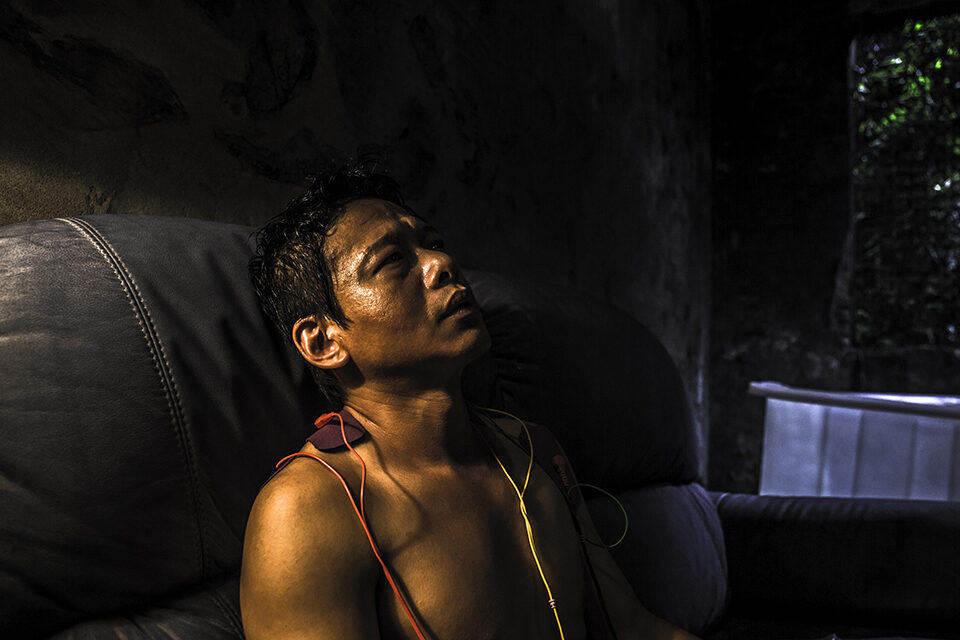
There are two great ghost-story effects in the film: one is when a woman appears in Lee’s bath, the other is a very simple effect early on where, if the viewer happens to look around, they’ll see a woman dressed in white standing on a balcony.
Different people see different things in this film—some people may not see the lady on the balcony, they may never turn around. If you’re in the position I would like you to be in, first you see a motorcycle… but most people don’t see the motorcycle, they just hear it, they’re looking around at other things. I had to be very certain that even when the audience doesn’t see certain things, they’ll hear them—they have a hint that something is there. And even if you don’t hear it, it doesn’t matter. Now I feel my audience doesn’t really have to understand my films, as long as each of them offers a different experience—that’s the goal.
You’ve been quoted as saying Stray Dogs [2013] would be your last film. How do you feel about that now?
I was interviewed in Venice, and I said, “Maybe this will be my last film to get a theatrical release.” They thought I meant I had made “my last film.” After Stray Dogs, I was working with museums, doing installations, and thinking about how films could be seen in different ways, rethinking how distribution could work for different films. Most of my collaborations in Taiwan are with museums and galleries—you have to buy tickets, so it’s still the same as when you go to the cinema, but it’s just changing the setup, changing the way of looking. With my latest film, Your Face, everybody said it was a piece for museums, but then I thought again and in May, it’s going to have a theatrical release in Taiwan.
I’m also trying to experiment with Chinese audiences in the cinema, to let them feel how the filmmaker wants them to see, rather than the other way. For example, with Stray Dogs, we had three rooms in the Guangzhou Museum of Art, and in one room, the audience needed to lie down to watch the film—I didn’t mind if they fell asleep or not.
I like to make simple films, in my own way. For the last two, three years, whenever I could get some funding, I’d film something with this person I’ve been watching over this period, a worker from Laos—filming them and Lee. I haven’t planned the shots, or the story—I’m just filming them separately, then putting them together. And the new cameras I’m using are very powerful, you don’t even need lighting, just the lenses. So that’s my work in progress.
Thanks to Aephie Chen for interpreting.
Jonathan Romney is a contributing editor to Film Comment and writes its Film of the Week column. He is a member of the London Film Critics Circle.



